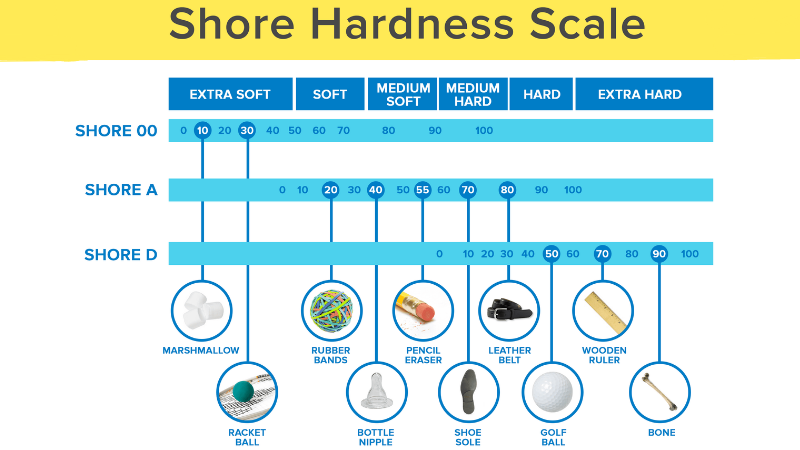Table of Contents
Shore A to Shore D When selecting materials for various applications, understanding their hardness is crucial. The A to durometer scales help manufacturers and engineers determine material softness or stiffness, ensuring suitability for specific uses. Whether in rubber, plastics, or industrial components, the right hardness level can impact durability, flexibility, and performance.
Hardness testing is vital across industries, from automotive manufacturing to medical devices. By using the A to hardness scales, engineers can compare different materials and make informed decisions. But what exactly do these scales mean, and why are they important? Let’s dive in Family Advent Calendar Ideas.
What is Durometer Hardness?
Durometer hardness is a standardized measurement used to evaluate a material’s resistance to indentation. It determines how soft or hard a material is, primarily in rubbers, polymers, and soft plastics.
Why is Durometer Hardness Important?
- Helps manufacturers select the appropriate material for different applications
- Ensures products meet industry-specific performance requirements
- Plays a crucial role in product durability and lifespan
Durometer readings are taken using a device called a durometer gauge, which applies pressure to a material and measures how much it deforms. The results are given as a numerical value on a scale, such as Shore A or Shore D.
Understanding Shore A to Scales
The Shore hardness scale was developed to classify materials based on their indentation resistance. The two most commonly used scales are :
Shore A Scale
- Measures softer materials, such as rubber, elastomers, and silicone
- Typically ranges from 0 to 100, with 0 being extremely soft and 100 being firm
- Used in industries like footwear, medical devices, and automotive seals
Scale
- Measures harder materials, such as rigid plastics and thermoplastics
- Also ranges from 0 to 100, but the penetration depth is much lower than Shore A
- Found in applications like industrial machinery components and protective casings
Shore A vs. Shore D: Key Differences
| Feature | Shore A | Shore D |
|---|---|---|
| Material Type | Soft rubbers, elastomers, foams | Hard plastics, thermoplastics, nylons |
| Typical Range | 10A – 90A | 30D – 90D |
| Uses | Seals, gaskets, footwear | Hard plastic casings, gears |
| Testing Method | Indentation with a softer needle | Indentation with a harder needle |
Shore A is used for softer materials, while Shore D is ideal for harder ones. For instance, a soft rubber gasket may have a Shore A hardness of 50A, while a rigid plastic case may be around 80D.
Applications of Shore A and Shore A to Shore D
Shore A Applications
- Rubber seals and gaskets: Used in plumbing and automotive industries
- Medical devices: Such as soft silicone-based prosthetics
- Footwear industry: Shoe soles with different hardness levels for comfort
Shore D Applications
- Plastic gears and components: Found in industrial machines
- Automotive parts: Dashboard panels, bumpers, and casings
- Sporting goods: Hard plastic shells for helmets and protective gear
Why is Shore Hardness Important?
Selecting the wrong hardness level can lead to material failure. If a gasket is too soft, it may deform under pressure, while a hard plastic part might crack instead of flexing.
Industries rely on precise hardness measurements to:
- Ensure durability under mechanical stress
- Improve product safety
- Maintain manufacturing consistency
Testing Shore Hardness: How It Works
Testing is done using a durometer, which consists of a needle-like indenter and a pressure gauge. The harder the material, the less indentation occurs, resulting in a higher reading.
Testing Procedure
- Place the material on a flat surface
- Press the durometer against it using a standard force
- Read the numerical value displayed on the gauge
Choosing the Right Shore Hardness for Your Application
Several factors influence material selection:
- Environmental conditions (temperature, humidity) Shore A to Shore D
- Load-bearing capacity
- Flexibility vs. rigidity needs
For example, a car tire must balance flexibility and wear resistance, making Shore A hardness of around 70A a good choice. Meanwhile, a hard plastic helmet requires Shore D hardness above 60D for impact resistance. Shore A to Shore D

